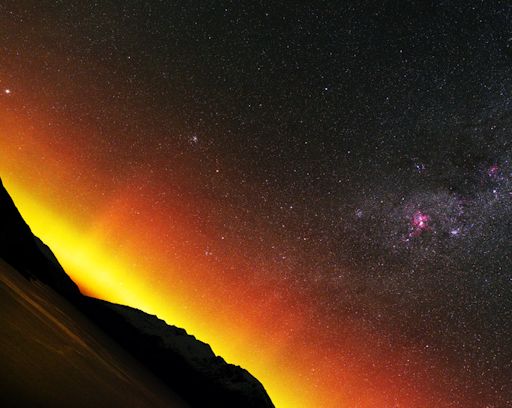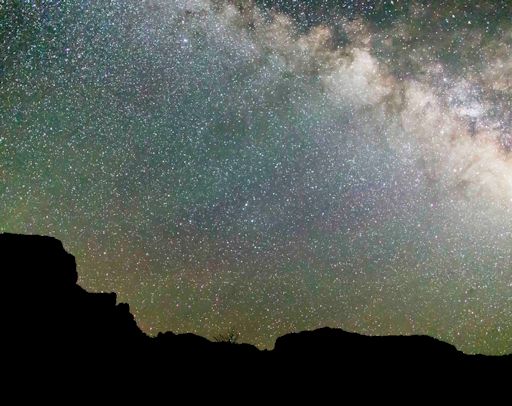When is the best time to see auroras? Where is the best place to go? And how do you photograph them? These questions and more are answered in a new book, Northern Lights - a Guide, by Pal Brekke & Fredrik Broms. | | |
CHANCE OF STORMS: NOAA forecasters estimate a 40% chance of polar geomagnetic storms on July 13th when a CME is expected to hit Earth's magnetic field. Computer models of the incoming CME anticipate a sharp increase in solar wind plasma density around the time of the crossing. This could spark bright auroras at high latitudes. Aurora alerts: text, voice.
WEAK IMPACT, BRIGHT LIGHTS: A weak CME impact on July 9th gave sky watchers more than they bargained for. Although the blow was feeble, both ends of the Earth lit up with auroras that persisted for nearly two days. Minoru Yoneto photographed the display from Queenstown, New Zealand:

"I did not expect to see big, bright Southern Lights from such a weak CME impact," says Yoneto. "Yet they were definitely present on July 10th." Sky watchers in Canada and northern-tier US states from Michigan to Washington saw similar displays right up until sunrise on July 11th.
The CME was effective in sparking high-latitude auroras because its wake contained a south-pointing magnetic field--a.k.a. "negative Bz". This opened a crack in Earth's magnetosphere, allowing solar wind to pour in and fuel the Northern and Southern Lights.
The moral to this story: Even weak CMEs can trigger bright auroras if the CME is dragging behind it a south-pointing magnetic field. The next CME is due on JUly 13th. Stay tuned. Aurora alerts: text, voice.
Realtime Aurora Photo Gallery
GREEN SKIES OVER TEXAS: Not all colorful lights in the sky are the aurora borealis. Astrophotographer Kenneth Edwards discovered this for himself on July 4th when he was taking a long exposure of the Milky Way over Big Bend National Park, Texas:

"For the long 4th of July weekend I went with my daughter to Big Bend National Park to try some time lapse photography of the Milky Way," says Edwards. "After getting back home, I was creating a time lapse video when I noticed the green colors. They were not visible to the naked eye but it sure was clear in the pictures and videos."
The green light is called "
airglow." Airglow is a luminous bubble that surounds our entire planet, fringing the top of the atmosphere with
aurora-like color. Although airglow resembles the aurora borealis, its underlying physics is different. Airglow is caused by
an assortment of chemical reactions in the upper atmosphere driven mainly by solar ultraviolet radiation; auroras, on the other hand, are ignited by gusts of solar wind.
Green airglow is best photographed from extremely dark sites on nights when the Moon is new or below the horizon. It often shows up in long exposures of the Milky Way: more airglow.
Realtime Space Weather Photo Gallery
Realtime Noctilucent Cloud Photo Gallery
[previous years: 2003, 2004, 2005, 2006, 2007, 2008, 2009, 2011]
Realtime Comet Photo Gallery

